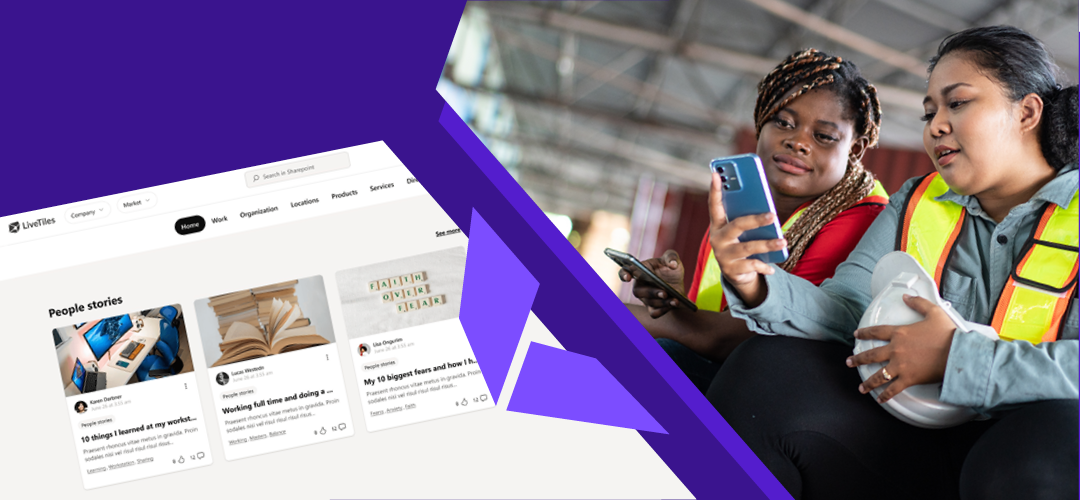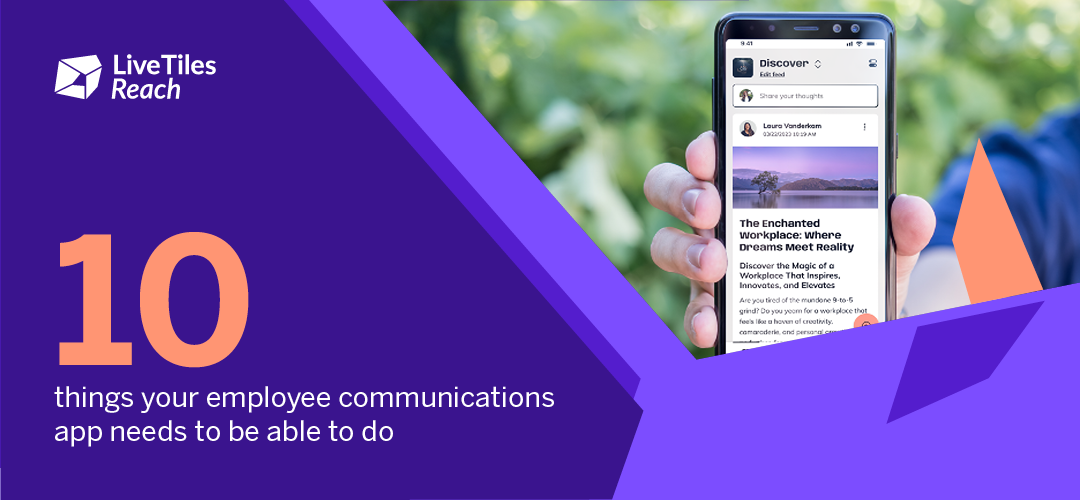This is the first in a series of articles about frontline workers. We are exploring the roles and challenges of these vital employees and how businesses can support their success.
When it comes to supporting and enabling frontline workers, there are now more challenges than ever before. Organizations are failing to maintain the best employee engagement and communication for these vital members of staff – and their businesses are suffering.
In this article, we’ll look at how to solve the problem.
The front line of an organization
Frontline workers are also known as firstline workers. That’s because they’re positioned on the first line of your organization – the first point of contact to the outside world.
These vital outward-facing “frontliners” include:
- Mining workers
- Construction workers
- Engineers
- Retail associates in stores
- Sales reps selling products and services
- First responders assisting in emergencies
- Medical staff and other health workers
- Call center staff and customer support staff
- Hospitality and housekeeping workers
Some sources like Microsoft’s ‘Empowering and securing your Firstline Workforce’ eBook include less traditionally customer-facing workers such as factory and warehouse staff, or construction workers.
One of your business’ strongest assets
Frontline workers are often the first to engage with customers and can be prominent ambassadors for your business and brand. They represent you in a way that few other employees do, forming valuable connections with customers as the human face of your business.
What’s more, because frontline workers are out at the counters, in the clinics, on the phones, and in the stores. They’re an unparalleled source of process knowledge and creative problem-solving. They understand the situation “on the ground” better than anyone else, so harnessing their insights is essential.
However, as work and the world itself have changed, so have the needs and experiences of firstline workers.
Disconnected employees in a connected world
Before COVID-19 pandemic, frontline workers may have felt disconnected with management and “corporate”, who have seemed remote. But with the pandemic limiting travel and reducing on-site headcounts, there’s even less on face-to-face communication with figures from head office.
New promotions, pricing changes, wider strategic initiatives in the organization can take some time to be conveyed, or in the worst case they may be misinterpreted or missed entirely. This can result in confusion, errors, and a hit to performance. This patchy, slow communication also damages company unity, culture, and teamwork. Frontline employees can easily become dissatisfied, disenfranchised, and disengaged.
How do you engage frontline workers?
Digital transformation is the key to connecting and engaging frontliners. In their study ‘The people power of transformation’, McKinsey found that among the companies they surveyed who viewed their digital transformation as successful, 73% reported visibly engaged frontline employees. In comparison, among businesses who didn’t consider their digital transformation successful, only 46% reported a similar level of engagement.
Let’s look at what successful digital transformation looks like from a frontline perspective.
1. Provide the business-critical information frontline workers need
Keeping frontline employees in the loop and engaged means providing access to up-to-date information and knowledge resources. This can be achieved via the kind of digital workspace that the people in corporate may already be regularly using. Operations manuals and other references resources should be easily available, wherever workers are and whenever they need them. Otherwise, your frontliners can easily feel lost, make mistakes, and become dissatisfied with their jobs.
2. Promote company culture, wellbeing, and unity
A digital workspace has a vital role in maintaining your company culture and supporting employee wellbeing. HR can provide information resources and support to workers who are facing difficulties. Company social activities, such as charity fundraising events, or work for the local community, can be advertised and promoted.
3. Easy, secure communication and collaboration for frontline workers
When frontline workers can easily reach their area manager or management at HQ for guidance, they feel more a part of your wider organization and can stay on top of changes and new initiatives. That includes providing an easily accessible and up-to-date directory of all staff, what their responsibilities/skills are, and how to reach them. By supporting this kind of communication, you can create valuable bonds and better collaboration between all your personnel – from the front line to the head office.
4. Instant messages, for fast questions and answers
One of the great things about digital communications is that it tends to break down hierarchies in a positive way. Phone calls to your manager can be daunting. But many employees find it much easier to seek help or make a constructive suggestion via an instant message, just like the ones they use in their favorite consumer-facing social media and message apps.
5. Provide mobile comms for a mobile world
When frontliners can use mobile devices to access information and official communication channels, that makes a big difference. Especially when business demands may require last-minute changes to staffing arrangements or which premises they will be working at from one day to the next. The more flexibility you allow when accessing information and communication, the more agile your workers – and your business – can be.
Supporting the future of the frontline
The world of business is becoming ever-more globalized and remote working and digital communication/collaboration will only become more prevalent. The frontliners of tomorrow may find themselves working with an even wider range of colleagues across different regions, departments, and time-zones.
The principles and uses of technology outlined here will help to ensure that frontline workers remain engaged, happy, and productive. By thinking about frontline employees right now, businesses can be as prepared as possible for whatever the future brings.
Want to learn more about how organizations can achieve frontline success? Don’t miss the next article in this series. Find out how to engage and empower your own frontline employees with LiveTiles, just get in touch with us.







